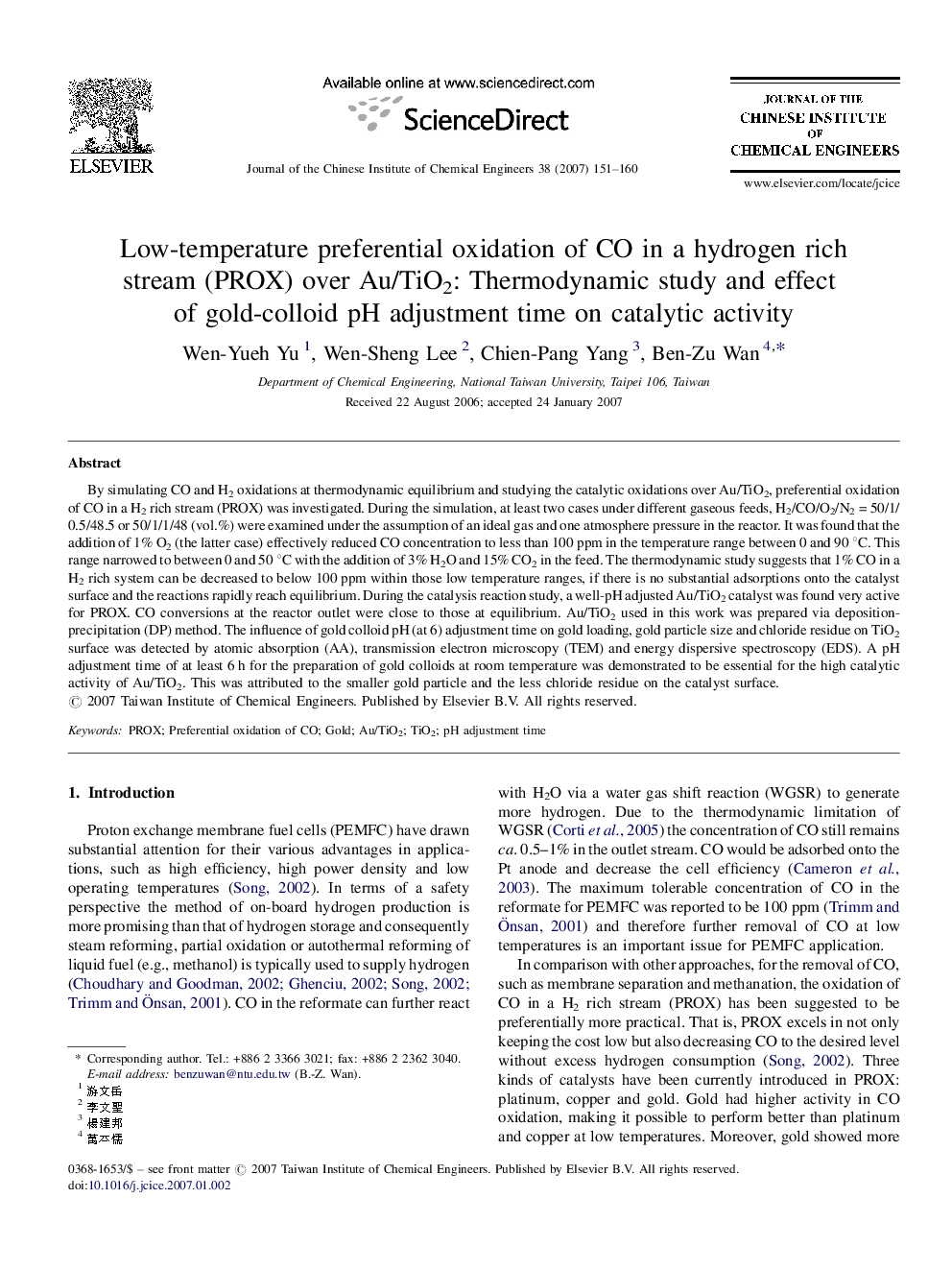| Article ID | Journal | Published Year | Pages | File Type |
|---|---|---|---|---|
| 217748 | Journal of the Chinese Institute of Chemical Engineers | 2007 | 10 Pages |
By simulating CO and H2 oxidations at thermodynamic equilibrium and studying the catalytic oxidations over Au/TiO2, preferential oxidation of CO in a H2 rich stream (PROX) was investigated. During the simulation, at least two cases under different gaseous feeds, H2/CO/O2/N2 = 50/1/0.5/48.5 or 50/1/1/48 (vol.%) were examined under the assumption of an ideal gas and one atmosphere pressure in the reactor. It was found that the addition of 1% O2 (the latter case) effectively reduced CO concentration to less than 100 ppm in the temperature range between 0 and 90 °C. This range narrowed to between 0 and 50 °C with the addition of 3% H2O and 15% CO2 in the feed. The thermodynamic study suggests that 1% CO in a H2 rich system can be decreased to below 100 ppm within those low temperature ranges, if there is no substantial adsorptions onto the catalyst surface and the reactions rapidly reach equilibrium. During the catalysis reaction study, a well-pH adjusted Au/TiO2 catalyst was found very active for PROX. CO conversions at the reactor outlet were close to those at equilibrium. Au/TiO2 used in this work was prepared via deposition-precipitation (DP) method. The influence of gold colloid pH (at 6) adjustment time on gold loading, gold particle size and chloride residue on TiO2 surface was detected by atomic absorption (AA), transmission electron microscopy (TEM) and energy dispersive spectroscopy (EDS). A pH adjustment time of at least 6 h for the preparation of gold colloids at room temperature was demonstrated to be essential for the high catalytic activity of Au/TiO2. This was attributed to the smaller gold particle and the less chloride residue on the catalyst surface.
